It’s a fact that home security is rapidly improving with smart surveillance. And this has culminated in technology like the smart doorbell, the next line of defense for homeowners wanting to protect their property and capture suspicious activity.
As the name suggests, smart doorbell sensors are placed where a standard doorbell would be. These cameras can capture everything that you see out your front door, including your driveway, front lawn, and, sometimes, your neighbors’ properties. These days, there are many choices when it comes to home security, so it’s worth considering a smart doorbell as a first step.
But how do smart doorbells change the dynamic of neighborhoods? Are people more likely to feel safe once they’ve installed this technology, or are neighbors likely to become suspicious of each other? We surveyed over 900 people with a smart doorbell to find out.
First (door)step to home security
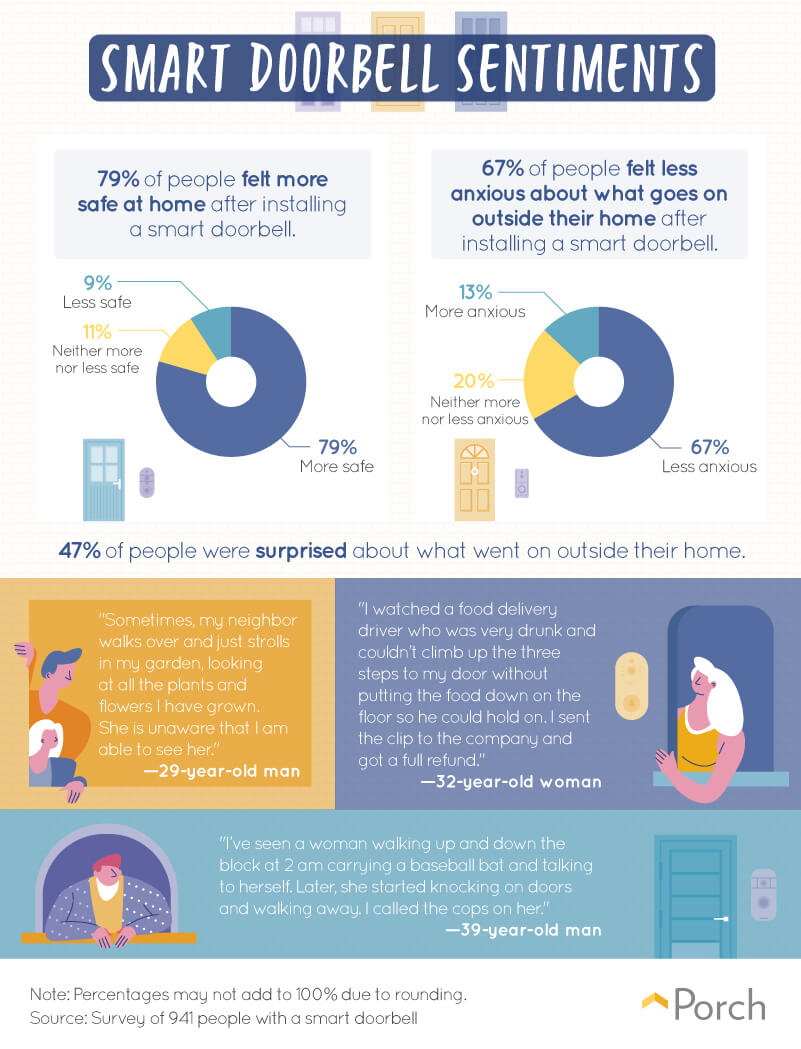
There are many factors to consider when installing a smart doorbell, but one thing holds true: The majority of respondents were thankful they took the plunge, with 79 percent of people feeling safer and 67 percent feeling less anxious about what happened at their front door with a camera at the helm.
Furthermore, nearly half of those surveyed were astonished at what the cameras revealed. Firsthand accounts from respondents ranged from seemingly innocuous incidents of snooping neighbors to potentially dangerous situations involving delivery drivers or suspicious people walking in view of the cameras.
A security system or smart doorbell can certainly help reduce anxiety and offer peace of mind, but the purchaser may have to sacrifice some privacy in the process.
How far is too far with doorbell surveillance?
Smart doorbell features have already expanded for this relatively new addition to the home security toolkit. But some of these features have hit a nerve with respondents.
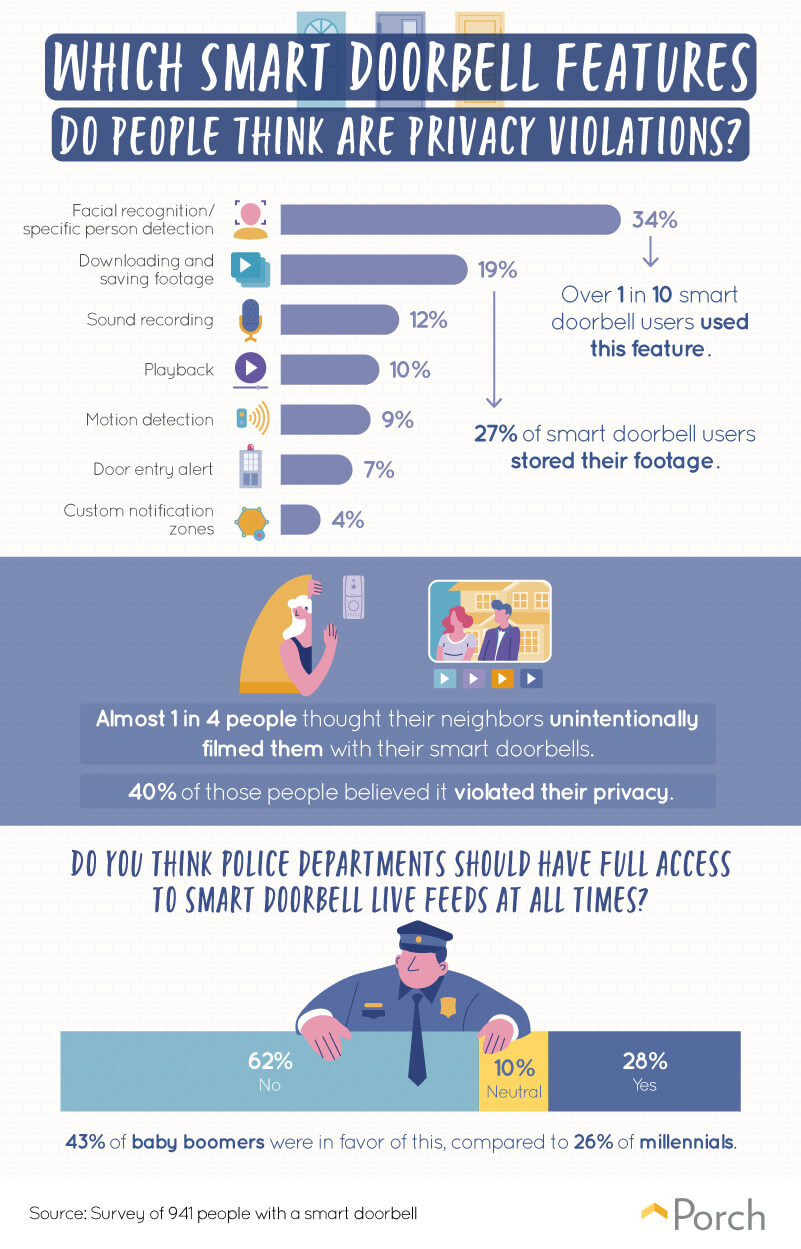
Conventional smart camera features such as audio recording, motion detection, and playback options didn’t stir up much controversy among respondents. In fact, these components are the very thing that many people sign up for with a home security system.
However, facial recognition software struck a chord with many respondents: 34 percent of people surveyed drew the line at cameras that employed facial recognition technology, while more than 10 percent admitted to using one in their homes. Facial recognition software has been an option explored by smart doorbell manufacturers such as Amazon to help homeowners gain an upper hand on would-be criminals.
A majority of respondents would not want law enforcement to tap into smart doorbells, either, but the opposite might become a reality. Due to a recent partnership between Amazon and over 200 police departments nationwide, facial recognition software is now being used by law enforcement—a practice that 62 percent of our survey respondents stood firmly against. The gist of the deal is that participating households would consent to give law enforcement agencies access to their personal Ring footage and sign up for Amazon’s neighborhood watch app, Neighbors.
Baby boomers were more likely to favor law enforcement accessing live smart doorbell feeds (43 percent), whereas only 26 percent of millennials agreed. Perhaps younger people are more wary of the possible dangers this technology could pose.
When security measures impact others
Installing a smart doorbell is a proactive step that homeowners can take to reclaim their safety and security. However, it’s important to consider the impact of your smart home device on your neighbors: 1 in 4 respondents claimed their smart doorbells filmed their neighbors, and 30 percent didn’t inform their neighbors of the presence of cameras.
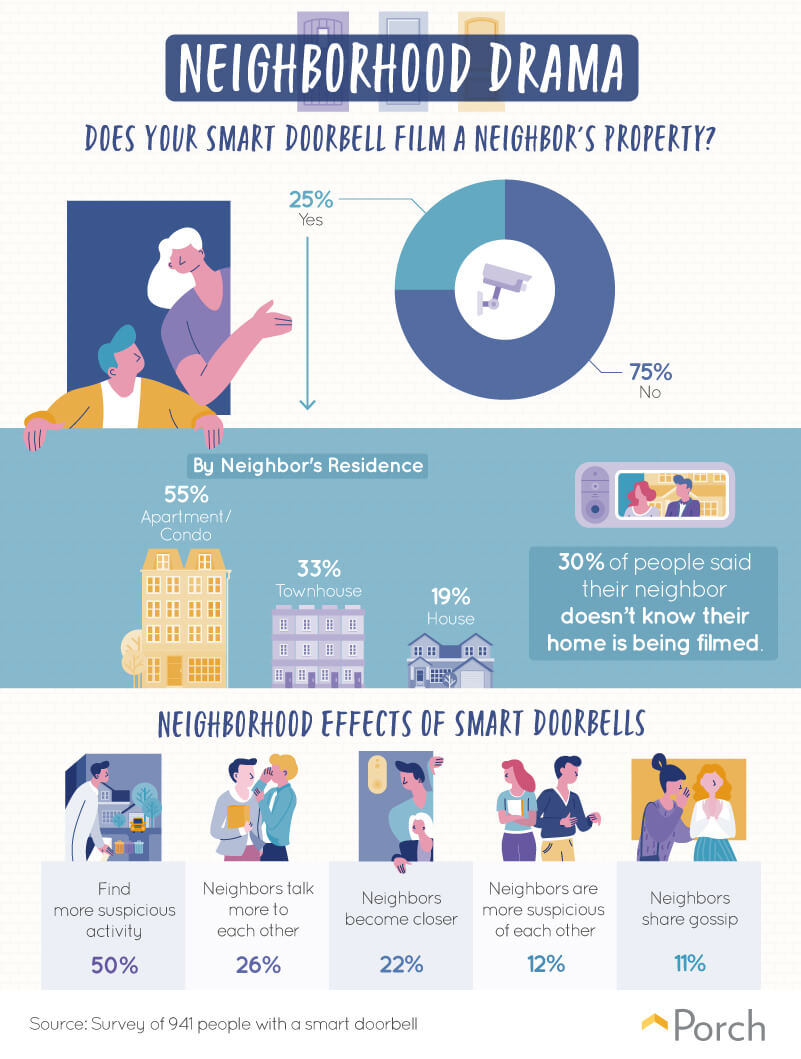
Likely due to their proximity, other apartments were most often captured by someone else’s smart doorbell. In response, smart device manufacturers now include models that emphasize “privacy zones” designed to block out neighboring dwellings.
One of the main arguments for smart doorbells centers around community and awareness: If one person has a smart doorbell, they can benefit their neighbors by capturing suspicious activity, reporting it to law enforcement, and uploading videos to neighborhood watch social media apps.
In fact, 50 percent of respondents said smart doorbells helped them to find more suspicious activity in their neighborhood.
Other benefits of smart doorbells reported by respondents were:
- Enhancing communication among neighbors (26 percent)
- Creating a sense of community and closeness among neighbors (22 percent)
Smart home security behavior
It’s clear that this technology appeals to a wide range of consumers and is rising in popularity. Learning how to install and operate the camera and sensor equipment is the first step after unboxing the hardware. Once it’s up and running, though, next comes establishing clear etiquette guidelines and standards of use to avoid infringing on someone’s privacy.
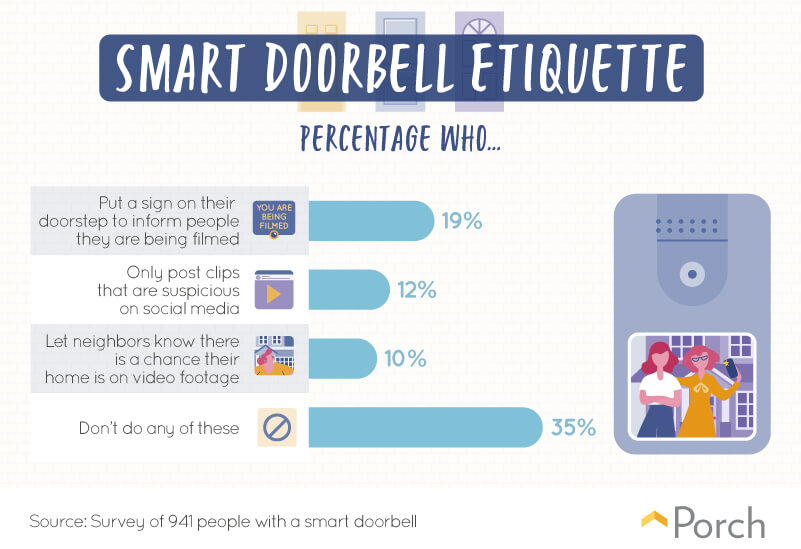
As this smart technology is relatively new, people might not be sure how to approach its use: 35 percent of respondents hadn’t taken any measures to establish etiquette.
However, informing those who approach your front door that they are being recorded can allow guests to consent to the filming and act as a deterrent to potential intruders, like the 19 percent of people surveyed who had signage near the entrance to their home.
Viewing and listening habits revealed
Many smart doorbells send push notifications to users’ phones if the motion detection feature turns on, allowing homeowners to see what is happening at their front doors in real time. Seventy-eight percent of people reported watching someone outside their home, either live or in playback mode.
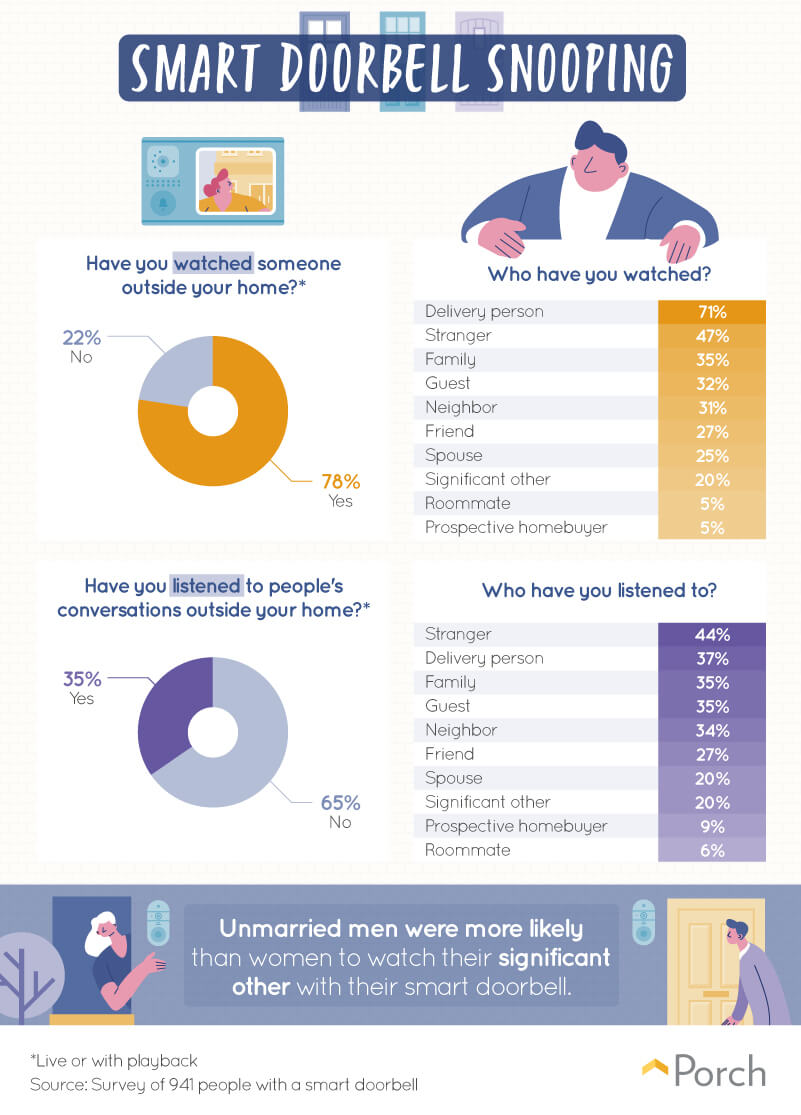
Overall, 71 percent of respondents admitted to watching delivery drivers outside their homes, with a significant number of respondents even listening to them (37 percent). Most delivery drivers are ethical enough to be hired by their respective companies, but questionable incidents of delivery people throwing packages or damaging goods are becoming a cause for concern among the public.
Fewer people may resort to knocking on the door to meet or communicate with someone, but nearly half of respondents admitted to watching a stranger on their smart doorbells, and 44 percent said they listened to live or recorded footage of unknown people at their doors.
Smart doorbells and the future
Keeping your home safe now looks different than in years past. And with the evolution of smart home surveillance, our defenses have never been stronger. Specifically, with smart doorbells, we can record and communicate with those who walk up to the front door without ever leaving our homes.
If you’re searching for advice or recommendations on the top smart doorbell and home security systems, check out Porch’s home security system comparison tool, which offers direct costs and features for the leading home protection tools.
Methodology and limitations
We used Amazon’s Mechanical Turk to survey 941 people who had a smart doorbell. To qualify for the survey, respondents had to have a doorbell with audio and video features, or video features only. Sixty percent of respondents had an Amazon Ring; 21 percent had a Google Nest; 6 percent had a SimpliSafe; 5 percent had a RemoBell; 2 percent had an August; 1 percent had a Zmodo; 1 percent had a Wisenet; and 3 percent had a brand that wasn’t listed in our survey. Of all respondents, 50 percent were men, 49 percent were women, and less than 1 percent reported a nonbinary gender. Forty-nine percent of respondents were millennials (born 1981 to 1997); 40 percent were from Generation X (born 1965 to 1980); and 11 percent were baby boomers (born 1946 to 1964). Generation Z (born 1998 to 2017), the silent generation (born 1928 to 1945), and the greatest generation (born 1927 or earlier) were excluded from the study. The average age of respondents was 38 with a standard deviation of 11 years. To be considered in our data, respondents were required to complete the entire survey and pass an attention-check question in the middle of the survey. Participants who failed to do either of these were excluded from the study.
The data have a 9 percent margin of error for baby boomers and a 5 percent margin of error for both Gen Xers and millennials.
Fair use statement
If you employ smart home security, you’ve already got the upper hand when it comes to potential risks. Share this data with friends and co-workers who are still unsure about taking the plunge. But be sure to cite us as your source and use these findings for noncommercial use only.

